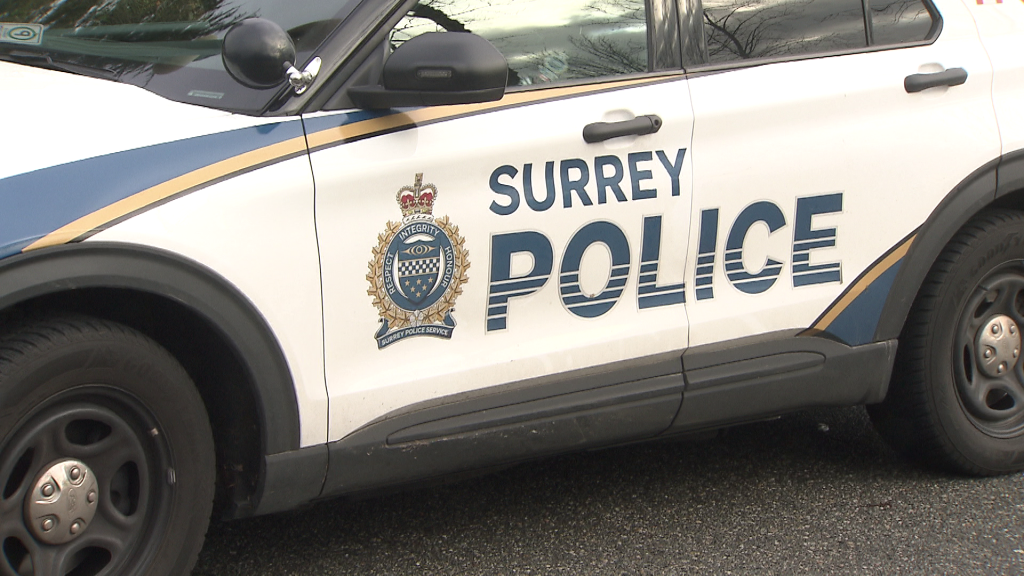Why are trucks hitting Lower Mainland overpasses?

Posted January 3, 2024 2:15 pm.
Last Updated January 3, 2024 10:09 pm.
The United Truckers Association (UTA) is calling for a full safety overhaul of B.C.’s supply chain and trucking industry, as overpasses in the Lower Mainland continue to be hit by commercial vehicles.
The association says while more training is needed for drivers, those who are shipping the products and loading cargo onto trucks also need more guidance.
Metric vs. imperial measurements?
UTA spokesperson Gagan Singh tells CityNews the answer to why these crashes keep happening might be simpler than you think, and may, in some cases, have something to do with trucks being loaded on the U.S. side of the border.
“On that side, the measurements are in feet whereas in Canada, it’s in metres. They need to have both kind of measurements … The trucker needs to know the height of the load in both metres and feet,” Singh said.
“For the truckers, there are fines and everything, which is the right thing, but no one is talking about the shippers and receivers, the people who are loading the bigger stuff on the trucks. They need to understand too.”
The UTA has released a checklist to help drivers avoid low-clearance crashes, with the first recommendation being knowing the “exact height of your load (in both metric and imperial measurements.)”
Singh says when a truck arrives to pick up a load, the shipper provides instructions to the people loading the cargo onto the trailer.
Before drivers leave, they are required to sign off on the load they’re about to transport.
“Before they cross the [overpass], they need to understand what their exact load height is and what they need to prepare,” Singh said.
He notes DriveBC also offers a handy tool that helps drivers map out their route, based on load heights, which can help prevent overpass collisions. However, he admits drivers need to understand how exactly to use this service for it to work.
“Drivers have the complete responsibility because they are the ones who have the responsibility of transporting that stuff. That’s why we are asking for provinces to step up and bring some sort of mandatory training which [has to be done] after two years again,” Singh said.
Infrastructure, regulation differences
But what exactly does additional training entail? It’s something many in the industry have said is needed. However, Singh says it’s not always a one-size-fits-all solution, noting different training is required for different types of loads.
He also points out the infrastructure is different in B.C. than in other, neighbouring jurisdictions.
Singh says if you look at the numbers from Washington state and Alberta, there are fewer incidents of overpasses being hit by large trucks.
“It’s a bit hard. We can’t tell government to replace the bridges overnight, but yes, the one thing that can be done overnight is they can bring up the training. This is the problem — if you look at the minimum height in B.C. of overpasses, it’s 4.1 metres,” he said, claiming that minimum is generally less than what you would see in Washington or Alberta.
According to the Alberta ministry, legal vertical height in that province is 4.15 metres. However, it adds while overhead signs are not included, they generally have a 5.5 metre clearance.
In Washington state, it appears clearance under overpasses is generally around 16 feet at minimum — or 4.87 metres.
Safety concerns
The most recent collision in the Lower Mainland happened on Tuesday, Jan. 2, when a truck’s cargo scraped an overpass on Highway 1 in Abbotsford. It didn’t result in any damage, according to DriveBC.
Singh says while he agrees with fines against those who are involved in these incidents, training is the most important piece in addressing the problem — but for everyone involved.
“My major concern is that no one’s talking about the shippers. No one is talking about the training. No one is talking about the infrastructure,” he said.
“We are not willing to bring on any kind of politics or play any kind of blame game. The only concern is how to make the roads more safe … The best part until now is no one has lost a life.”

Meanwhile, the BC Trucking Association tells CityNews it is pulling together industry decision makers to figure out if there’s anything else that needs to be addressed to avoid similar crashes going forward.
The most recent significant collision involving highway infrastructure happened on Dec. 28, 2023, when a truck collided with the 122 Street overpass over Highway 99 in Delta. That resulted in “significant damage,” according to the Ministry of Transportation and Infrastructure.








